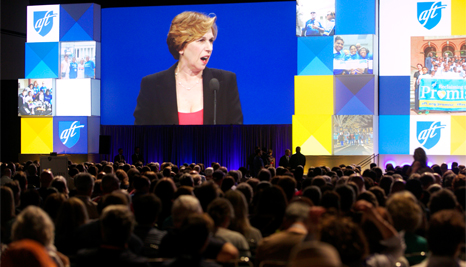A couple of years back, I taught a delightful young lady whom I will call “Sandra.” She was a student in my Collaborative Team Teaching class, a section of 10th-grade English taught simultaneously by me—the English teacher—and a special education teacher, and comprising both special education and general education students. Sandra was one of the former; although she could read reasonably well, her writing was completely incomprehensible, and her understanding of high-level or abstract concepts was quite limited. Her Individualized Education Program (IEP) revealed a low IQ and a host of diagnosed learning disabilities (and left out some undiagnosed ones, I suspect).

Is it strange to say that, despite this, she was a great student? Though her comments on literature were generally more factual or summary than analytical, Sandra showed far more willingness to participate in class discussions and group work than some of her peers with more “innate” ability. She had discrete skills and interests—fashion, for one, as well as graphic arts and music—which she was eager to apply in her schoolwork. She was sensitive, eager to please, and scrupulously honest: she never once gave me an excuse for not completing an assignment (while her peers favored lengthy tall tales for these occasions, beginning with, “Well, what had happened was…”).
During Sandra’s senior year, the school was offered the chance to grant a few students a diploma through Career Development and Occupational Studies (CDOS), a Career and Technical Education (CTE) program in which students work in an internship or apprenticeship setting outside of school, with the principal’s approval. Every teacher agreed that Sandra was an obvious candidate, and she soon began to shadow a cosmetology professional after school. It was an excellent placement: Sandra was interested in the skills she was learning and would have something “in place” that could enable her to support herself come graduation.
Our school, however, would effectively receive a penalty for this placement, in the opportunity cost of earning no “points” on our progress report. Points are only awarded for students who earn a Regents diploma—by passing five Regents exams (a near-impossible outcome for Sandra) and obtaining 44 credits—the benchmark for “college readiness.” Despite the fact that Sandra would still be required to pass all her core courses, graduating with the same number of credits as her peers, and would have a leg up on productive employment after high school, our school could receive no points from her CDOS diploma.
Though the Common Core State Standards, the content guidelines for Sandra’s and her peers’ courses, claim to promote “college and career readiness,” the career part seems like mere lip service; the nationwide dearth of trade and vocational programs for students is evidence to that. Underlying the college-for-all bias is the fallacy that only kids like Sandra, with limited academic ability, could benefit from trade or vocational education—thus, such a track is looked down upon (as though having options for kids like Sandra weren’t in itself important). In fact, students with a range of abilities would gain if their schools offered opportunities that deviated from the traditional college-prep trajectory. Even “college-ready” students seek other options—because college is too expensive, because college doesn’t provide enough job security in the current economy, or because four years of highly academic coursework is simply not appealing. And to me, that’s fine; schools should only be pushing toward college students who are intellectually and emotionally ready to do the work that a bachelor’s degree entails.
We owe it to all students, including Sandra—who, if 90 percent of life is showing up, most assuredly deserves the “A”—to offer a broader menu of education options at the high school level. Since 2003, New York City has opened 28 schools that supposedly offer career or technical training, a good start, but not sufficient, and too poorly publicized for most students even to be aware of them. CTE is not some passé initiative of the 20th century and often includes rigorous training. Our students deserve the chance to engage in the full range of occupations and, moreover, to build fulfilling professional lives on their own terms.
Ilana Garon teaches English in a New York City high school and is author of “Why Do Only White People Get Abducted by Aliens?”: Teaching lessons from the Bronx (Skyhorse Publishing, 2013).
This article appeared in the Summer 2014 issue of Education Next. Suggested citation format:
Garon, I. (2014). Making the Trade: Offering noncollege options to students. Education Next, 14(3), 84.





